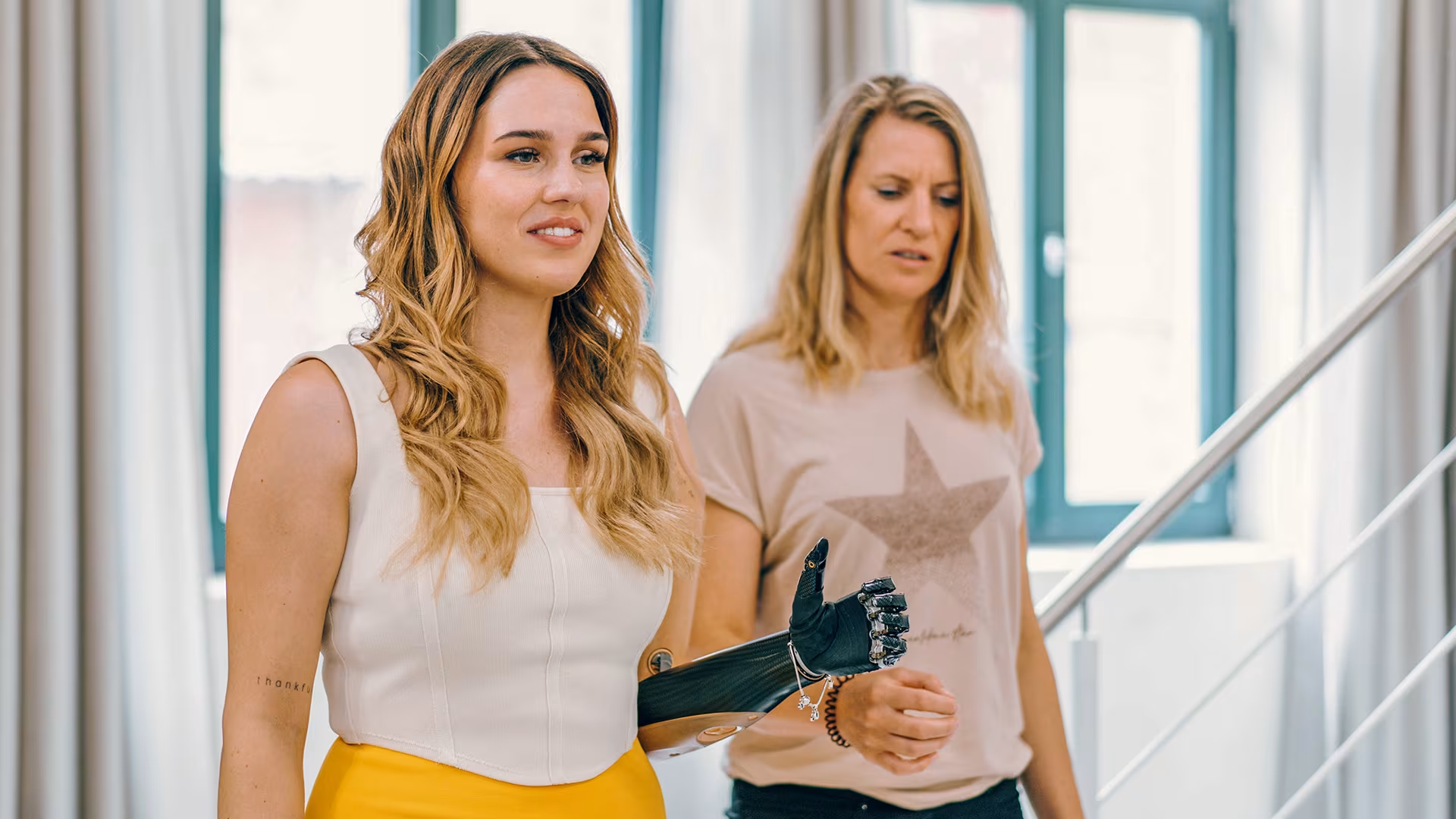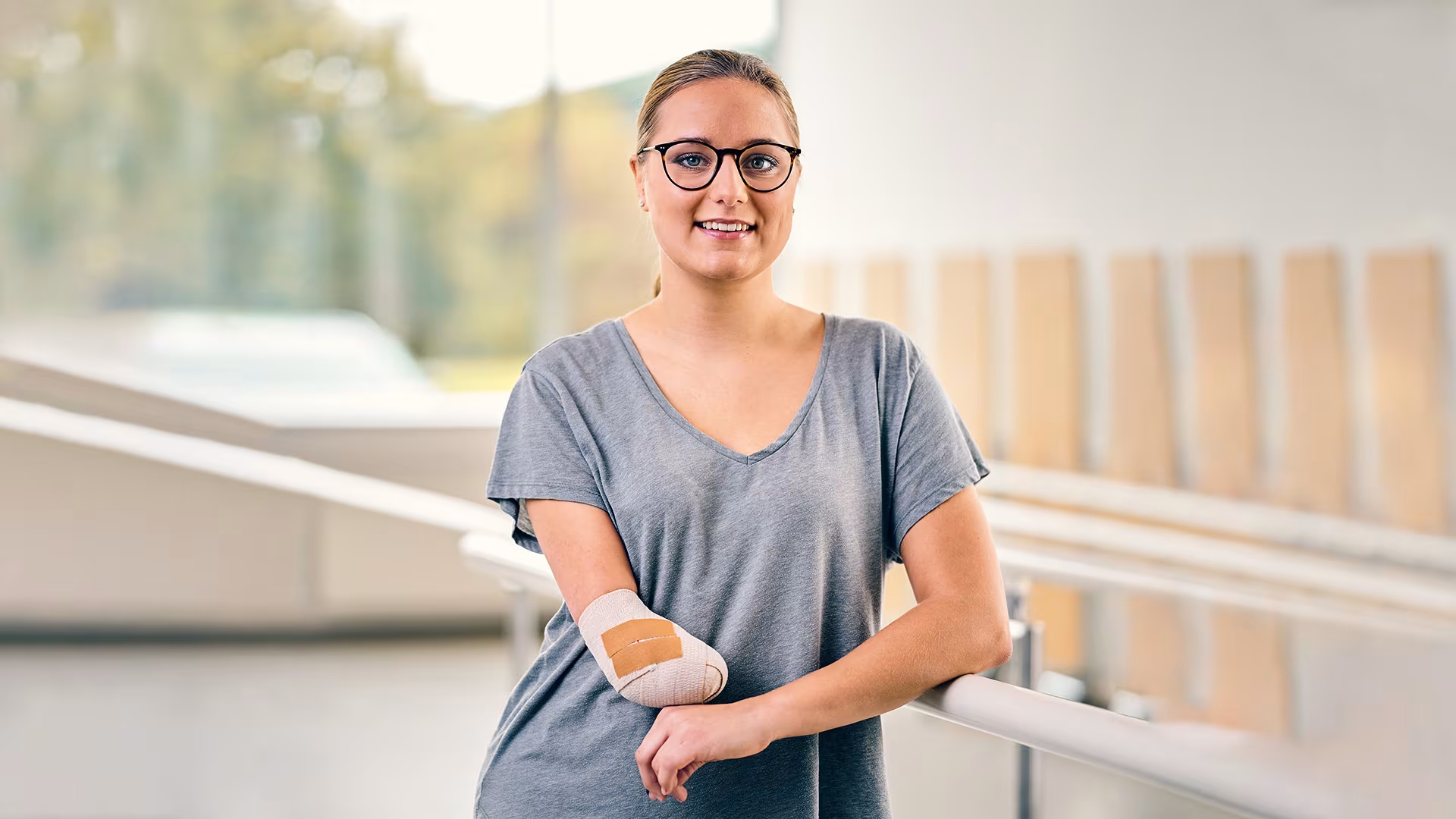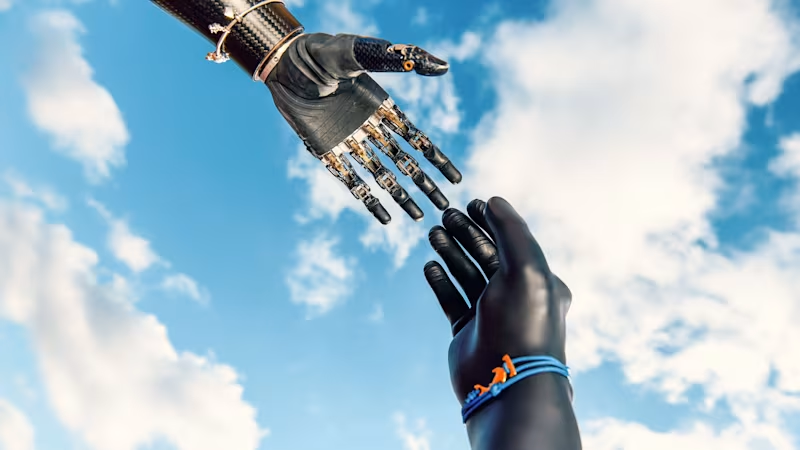


Learning to use a prosthetic arm
A prosthetic arm can make a big difference in your day-to-day life, but learning to use one can require a lot of practice. Find out how to pick the right device and get the most from it.
A prosthetic arm can make a big difference in your day-to-day life, but learning to use one can require a lot of practice. Find out how to pick the right device and get the most from it.
Mastering your prosthetic arm is a process
Once your amputation surgery is complete and you begin the rehabilitation process, your care team will also help you prepare for another important step in your life after amputation: learning how to select and use a prothesis.
Today, people with upper limb differences have a variety of prosthetic arms to choose from, if they decide to use one. While these devices cannot fully replace a hand or arm, the right one can be a valuable tool – one that helps make many activities, hobbies, and tasks much easier.
But like any new tool, learning to use a prosthetic hand takes time, practice, and dedication. Below are a few important topics to focus on when just getting started, including:
The different kinds of prosthetic hands your prosthetist may discuss with you
How your prosthetist will customize your new device for your residual limb
Daily activities that can help you get the most from your prosthetic arm
Selecting the right device for you
If you decide you want to try a prosthetic arm, a professional prosthetist on your care team will help you explore the different options you can choose from and understand which one is best for you.
There are several different types of prosthetic arms you can try. Each one has different advantages, so it’s important to talk to your prosthetist about which of these devices will be the best fit for your lifestyle, hobbies, and job.
Some of the most popular kinds of prosthetic hands include:
Multiarticulating hands: These state-of-the-art devices use electrical signals from the muscles in your residual limb (“myoelectric” signals) to move the mechanical fingers and/or thumb in a way that mimics the human hand. The bebionic hand and Michelangelo hand are good examples.
VariPlus hands: These myoelectric devices give the user precise, open-and-close control of their prosthetic hand. Simple, durable options like the MyoHand VariPlus Speed and Greifer DMC VariPlus are often good “starter hands” for people who are new to prosthetic arms.
Body-powered prosthetics: These devices typically enable users to open and close a simple hook by using a harness and cable connected to their upper arm, shoulder, and chest. These rugged, durable protheses can be a good choice for people who perform many heavy-duty activities.
Which one is the right choice for you? That’s an important discussion to have with your prosthetist. They’ll help you understand the advantages and limitations of each device, and which one will be the best fit for your daily life.
Natural vs “bionic”: How do you want your prosthetic arm to look?
This is an important question to ask yourself as you consider your options. Some people with an upper limb difference want their prothesis to look as much like a “normal” arm as possible. Others love to show off their techy “bionic hand.”
You get to choose what’s most comfortable for you. If you want your prothesis to look natural, most devices can be covered with a “glove” (like the MyoSkin Natural) that’s customized to look like your hand. If you have a higher amputation level, you can also get natural-looking silicon prosthetics that mimic the look of your arm.
Love how cool your bebionic looks? Show it off!
Crafting the perfect connection between you and your device
Once you’ve chosen a device, your prosthetist will start working on one of the most important parts of your prosthetic arm: the socket that connects the device to your residual limb.
Your socket will be carefully customized just for you, using detailed measurements and models of your residual limb. This helps ensure your prothesis will be comfortable, easy to move, and stay securely connected to your arm.
The customization process may require a couple of visits to your prosthetist’s office. But once it’s finished, your prosthetic hand should feel like you can easily wear it all day long.

MyoTest: Getting ready for a myoelectric prosthetic
If you’re interested in using a modern prothesis like the bebionic or Michelangelo, your fitting process will also include some steps to determine the best way to connect your device to the muscles that will power and control it.
To prep your socket for one of these devices, your prosthetist will perform a MyoTest: a series of measurements that help verify if your residual limb is compatible with a myoelectric device, and then identify the best placement for your prosthetic’s electrodes.
If your residual limb is a good fit for a myoelectric prosthesis, your prosthetist will then use your MyoTest results to craft a socket that helps give you consistent, comfortable control of your myoelectric device.
Learning how to get the most from your prothesis
Once your prothesis is complete and ready to wear, your prosthetist will show you how to start using it. This training will usually focus on mastering basic movements, key grips, and everyday tasks you need to know how to manage.
Once you’re home, though, the real learning process starts.
Arm prosthesis after a tumour
See what’s next for your journey with an upper limb difference

Preparing for your amputation surgery
An amputation is a major medical procedure that your care team will carefully plan and prepare you for. Find out what to expect from that important process.
An amputation is a major medical procedure that your care team will carefully plan and prepare you for. Find out what to expect from that important process.

Amputation rehab after losing a hand or arm
After your procedure, you and your care team will work together to help you manage your residual limb and learn how to use a prothesis. See what the rehab process looks like.
After your procedure, you and your care team will work together to help you manage your residual limb and learn how to use a prothesis. See what the rehab process looks like.

Exploring bionic life stories
Discover a truly remarkable group of people who've come together to share their experiences, their inspiration, and their tips and tricks for living an empowered life with a bionic hand. Explore their inspiring stories - and share yours!
Discover a truly remarkable group of people who've come together to share their experiences, their inspiration, and their tips and tricks for living an empowered life with a bionic hand. Explore their inspiring stories - and share yours!











